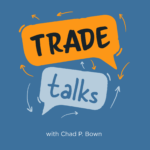Trade Talks
198. Inside Washington’s lobbying industry

/
What we know about the US lobbying industry and how it influences trade and other types of economic policy.
Trade Talks
197. Moving workers across Europe

/
How the European Union’s controversial “posting” policy impacted the movement of workers as well as local communities across the continent.
Trade Talks
196. How multinationals avoid taxes through technology licensing

/
Companies can avoid taxes by moving profits from IP royalties offshore. What would happen if that changed?
Trade Talks
195. How did Canadian workers adjust so well to US trade?

/
Canadian workers faced new competition after the sudden free trade agreement with the US in 1989. Why were they able to adjust so successfully?
Trade Talks
194. Industrial policy detectives: China's subsidies for shipbuilding

/
A new way to measure China’s subsidies for shipbuilding reveals how much they transformed the industry for the country and world.
Trade Talks
193. Did multinationals enforce Bangladesh’s new labor law?

/
Following the Rana Plaza factory collapse, foreign companies promised to enforce Bangladesh’s new labor law. What happened next?
Trade Talks
192. Will more farm trade cause more deforestation?

/
As trade with farm exporting countries expands, governments must also consider how to prevent deforestation.
Trade Talks
191. Brazil’s trade opening and its toll on workers and crime

/
How Brazil’s trade liberalization of the 1990s led to unexpected and lasting impacts on workers and a temporary rise in violence.
Trade Talks
190. Climate change, floods, and the future of auto supply chains

/
What consumers can expect from auto companies investing in supply chain resilience as weather disasters loom.
Trade Talks
189. South Korea’s controversial industrial policy

/
How South Korea’s Heavy and Chemical Industry Drive policy of 1973-79 worked and may have contributed to its economic rise.
